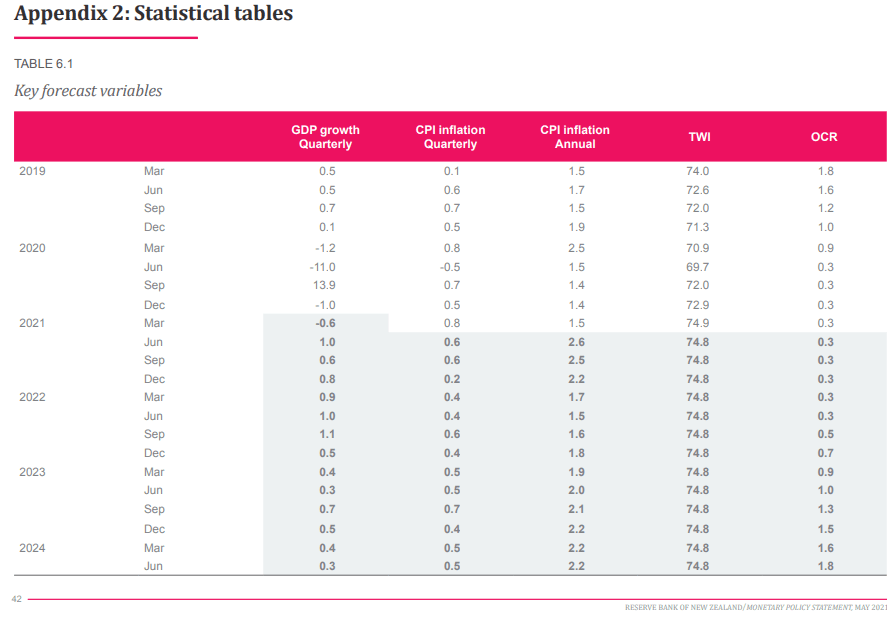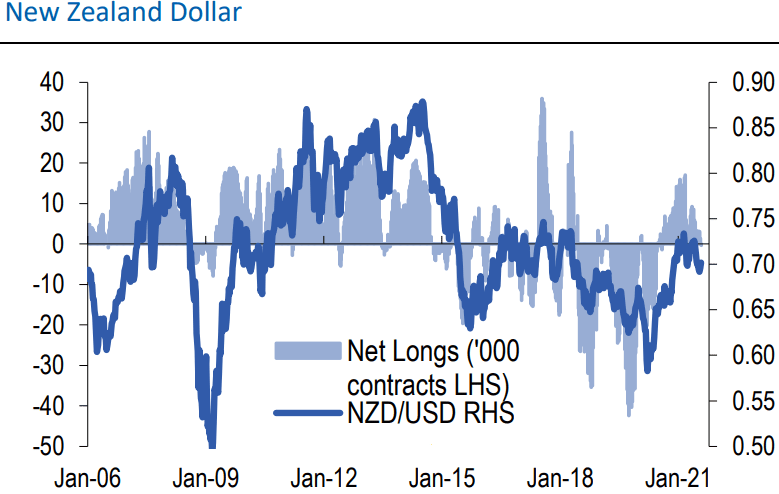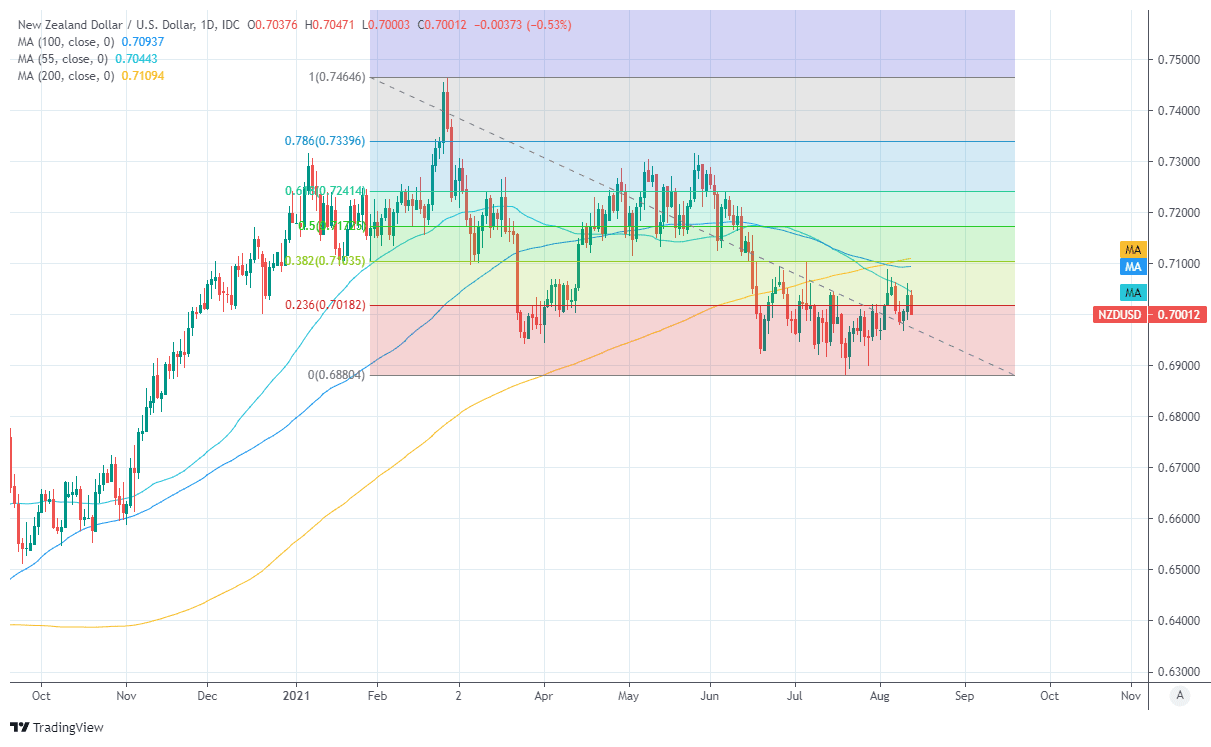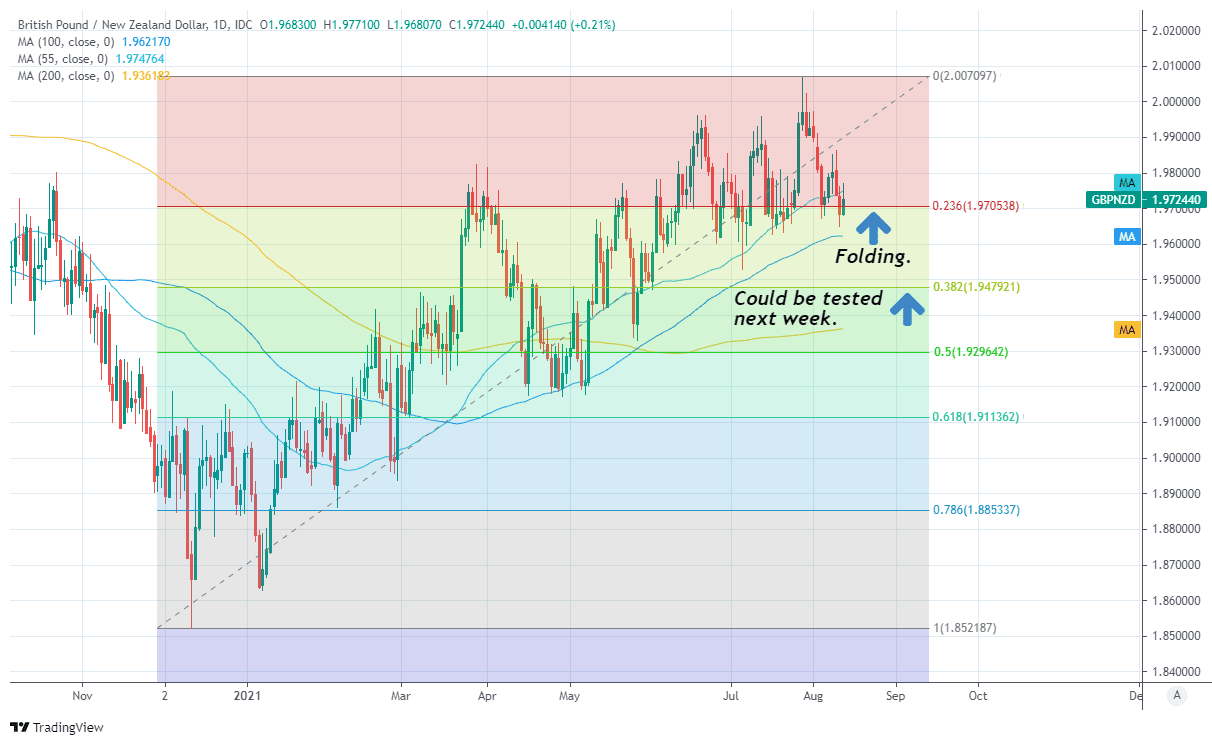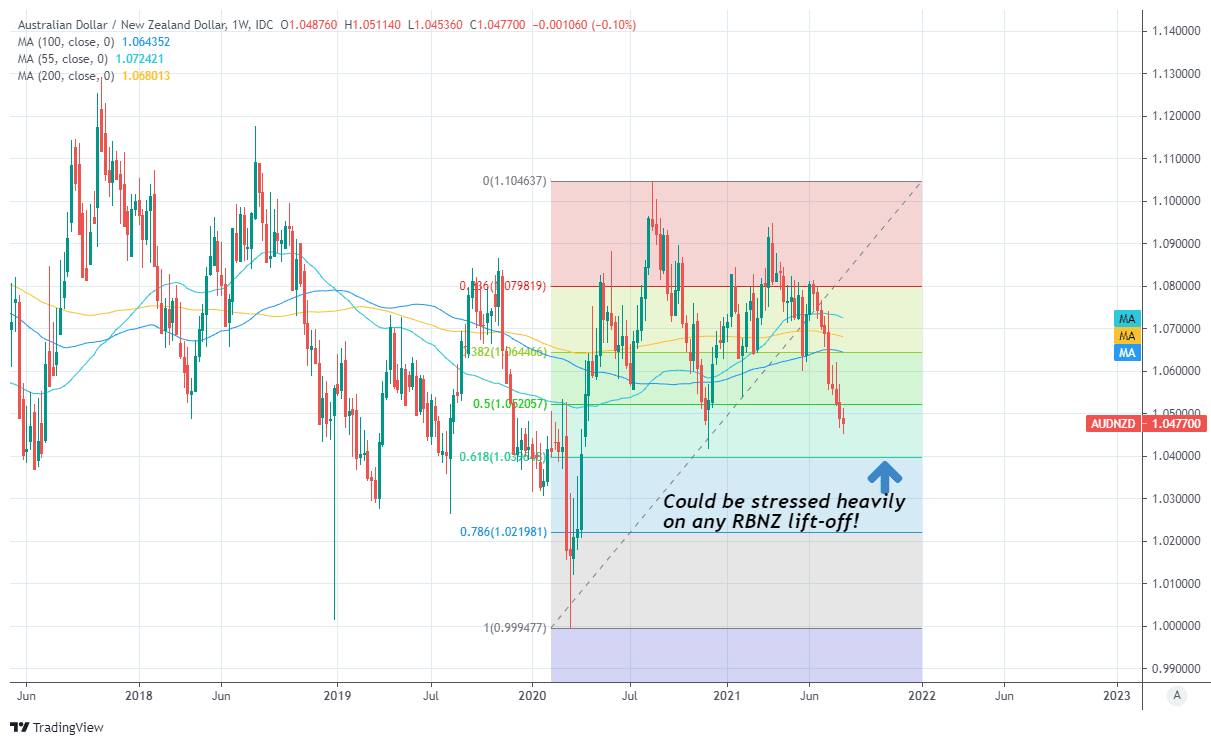Pound-New Zealand Dollar Rate Could See 1.95 on Any RBNZ Lift-off
- Written by: James Skinner
-
- GBP/NZD risking run-in with 1.95, with AUD/NZD testing 1.04
- While NZD/USD eyes attempt on 0.71 if RBNZ begins to lift-off
- After speculative market sits out pricing-in of RBNZ rate cycle

Above: RBNZ Governor Adrian Orr. File Image © Pound Sterling, Still Courtesy of Financial Services Council NZ
- GBP/NZD reference rates at publication:
- Spot: 1.9695
- Bank transfers (indicative guide): 1.9000-1.9140
- Money transfer specialist rates (indicative): 1.9518-1.9550
- More information on securing specialist rates, here
- Set up an exchange rate alert, here
The Pound-to-New Zealand Dollar rate faces at least a corrective setback of around 200 points from Friday’s market if the Reserve Bank of New Zealand (RBNZ) begins to raise its interest rate next week in a policy decision that could also be likely to severely stress the 1.04 support level in AUD/NZD.
Monetary Policy Committee members at the RBNZ are now widely expected to become the first central bankers among those of major advanced economies to commence the process of interest rate normalisation in next Wednesday’s 03:00 monetary policy decision.
“The RBNZ will be much quicker on the draw than virtually any other major central bank, but the data mean such a move is justified. Swift and competent action by key health and economic policymakers (as well as no small measure of good luck) has seen the country weather the COVID storm far better than nearly anywhere else,” says Nathaniel Keall, an economist at ASB Bank. “The time for emergency policy settings has passed.”
Recent economic data has seen prices in the overnight-index-swap market for interest rate derivatives - popular tools used by companies and investors to insure against or wager on interest rate changes - implying that the RBNZ’s cash rate is likely to rise from 0.25% on Friday to 0.90% by year-end.
“All survey participants expected to see at least one hike to the OCR in the next twelve months and over 80% of respondents expected to see two to five rate hikes over the next year,” the RBNZ said on Thursday this week when setting out the results of its latest inflation expectations survey.
Above: RBNZ’s official cash rate assumptions from May’s Monetary Policy Statement.
Market expectations are tantamount to investors taking to the bank nearly three 0.25% rate rises before the curtain closes on 2021, or some other combination worth almost 0.75% in total increases to the benchmark for borrowing costs, although the same market also implied this week that up to two more rate rise are likely before the end of 2022 when the cash rate is seen at 1.37%.
With recent GDP and inflation data aside, a big part of the reason for these expectations is the guidance given by the RBNZ itself when it incorporated at the foundations of its May economic forecasts the assumption that the official cash rate would rise from 0.25% Friday to 1.75% in early 2024.
{wbamp-hide start}
{wbamp-hide end}{wbamp-show start}{wbamp-show end}
“While there is some risk of the RBNZ moving in 50bp steps, particularly in the short-term, it is hard to argue that the bulk of the repricing of rate prospects is not done for now. Our near-term forecasts have only a slightly positive bias for NZD on the main crosses,” says Adam Cole, chief FX strategist at RBC Capital Markets, who forecast NZD/USD to rise to 0.71 this quarter.
With interest rate rises of more than 100 basis points or 1% on the table for the next year or so the New Zealand Dollar and any currency could typically be expected to have outperformed somewhat heading into the event, more so in the current environment where all other central bank interest rates are at zero or below in the G10 segment of major economies, although the Kiwi’s gains have been limited of late wherever not nonexistent.
Above: RBC Capital Markets graph shows speculative investors holding almost a net-neutral exposure to the New Zealand Dollar, indicating that many currency traders have sat out the recent repricing of the RBNZ interest rate outlook.
“The rise in NZD/USD has been very contained (+0.3% in the past month) considering the meaningful monetary policy divergence between the RBNZ (that ended asset purchases in July) and the Fed (that still has to start tapering),” says Francesco Pesole, a strategist at ING.
“Recent data on FX positioning suggest that the NZD is no longer an overbought currency, and this means that a post-RBNZ meeting profit-taking event in NZD does not look very likely if the Bank actually delivers a rate hike and signals more will come,” Pesole says.
One reason for the Kiwi’s recent lethargy is the above-pictured lack of exposure to it among speculative traders who appear to have sat out the recent pricing-in of a rising RBNZ cash rate.
Secure a retail exchange rate that is between 3-5% stronger than offered by leading banks, learn more.
This is potentially due to scepticism of whether the bank would really follow through on its May assumptions, although scepticism would become unsustainable if the RBNZ does go ahead with a rate rise next Wednesday and so could see the NZD/USD rate rising as a result.
“NZD/USD retains a glimmer of upside potential, after surviving a USD-led decline a few days ago. A break above 0.7090 would support a near-term bullish outlook, while below 0.6970 would do the opposite,” says Imre Speizer, head of NZ strategy at Westpac.
“The RBNZ MPS next week could be the event which causes the NZD to break free of this tug of war, if the guidance implies an even faster and larger set of rate hikes, or if a 50bp hike is delivered (it’s 30% priced in now),” Speizer says.
Above: NZD/USD at daily intervals with major moving-averages and Fibonacci retracements of June decline indicating possible areas of resistance.
A rate rise from the RBNZ next week would be a clear signal of intent to lift borrowing costs faster than was previously guided for and could serve as a catalyst for NZD/USD to take a run at the top of the range referenced above by Westpac’s Speizer and for a move toward the 0.71 forecast of RBC Capital Markets, in what would be a bearish outcome for the Pound-to-New Zealand Dollar rate.
“Next week’s RBNZ MPS will be messy no matter the result given that the market is split 80/20 between a 25bp and a 50bp hike. Volatility is thus likely,” says David Croy, a strategist at ANZ, who sees NZD/GBP meeting resistance near 0.51 and GBP/NZD slipping near to 1.96 next week.
“NZD/GBP has threatened to break out of its 2021 downtrend channel a couple of times now, but hasn’t succeeded. It has good prospects to do so if next week’s MPS is hawkish, but let’s see,” Croy says.
The Pound-to-Kiwi rate always closely reflects the relative performance of NZD/USD and the main Sterling exchange rate GBP/USD, and would dip below the 1.95 handle at least briefly next week if NZD/USD reaches 0.71 and if at the same time, GBP/USD is still languishing near Friday’s 1.3800.
However, it’s not obvious that the main Sterling exchange rate would remain suppressed at such low levels, meaning that declines in GBP/NZD could well peter out before it reaches the 1.95 level next week.
There are good reasons however for why Kiwi exchange rates other than GBP/NZD could be more likely to rise next week.
Above: GBP/NZD at daily intervals with major moving-averages and Fibonacci retracements of 2021 rally indicating possible areas of support.
One example of another Kiwi exchange rate that could potentially do well is AUD/NZD, which may now be in line for further declines.
“It may be better to think about NZD outperformance in relative terms, for example against the AUD. Both currencies have a similar exposure to external economic forces, but the monetary policy reaction function and pricing has moved in NZD’s favour, and may not have been reflected in the FX cross, in our view,” says Paul Mackel, global head of FX research at HSBC, in a recent review of the bank’s forecasts.
“Another, less obvious, comparison would be the SEK, which also has a strong correlation to global forces, but which currently lacks any domestic impetus for rate hikes,” Mackel says.
AUD/NZD has fallen steeply of late due to losses in the main Australian exchange rate AUD/USD which, if sustained as NZD/USD attempts a recovery, would be likely to see AUD/NZD decline further given that AUD/NZD always closely reflects relative price action in AUD/USD and NZD/USD.
The AUD/NZD rate would trade as low as 1.0350 next week if AUD/USD continues to languish around Friday’s 0.7350 and NZD/USD attempts a run on 0.71, which implies that a major level of technical support around 1.04 could come under severe pressure in response to any RBNZ rate rise.
“Although the December 2020 low in the 1.04 area is likely to offer strong support we expect the downtrend in AUD/NZD has further to run,” says Jane Foley, a senior FX strategist at Rabobank. “Dependent on the outcome of next week’s RBNZ meeting, there is scope for AUD/NZD to drop further towards the 1.00 level on a 3 to 6 month view.”
Above: AUD/NZD shown at weekly intervals with major moving-averages and Fibonacci retracements of recovery from 2020’s coronavirus-inspired collapse indicating possible areas of support.





